Teen idol
A teen idol is a celebrity with a large teenage fan-base. Teen idols are generally young but not necessarily teenaged.[1][2][3] Often teen idols are actors or singers, but some sports figures also have an appeal to teenagers. Some teen idols began their careers as child actors, like Leif Garrett, Lindsay Lohan and Hilary Duff.
The idol's popularity may be limited to teens, or may extend to all age groups. Many teen idols are targeted for adults for nostalgia purposes.
There were teen idols before there were teen magazines, but idols have always been a permanent feature in magazines such as Seventeen, 16 magazine, Tiger Beat and Right On! in the United States, and in similar magazines elsewhere. With the advent of television, teen idols were also promoted through programs such as American Bandstand, The Ed Sullivan Show, Soul Train and in the UK Top of the Pops. Today's teen idols have spawned an entire industry of gossip magazines, television shows, YouTube, and whole television channels such as E!.
Many American teen idols achieve "cross-over" success internationally; however, this list is not limited to American artists alone with some people such as German popstar Bill Kaulitz of the pop-rock band Tokio Hotel. In Asia, idols range from Japanese pop megastars Ayumi Hamasaki and Namie Amuro as well as Kana Nishino and Japanese music groups such as Momoiro Clover Z, Morning Musume, AKB48, and Perfume and Johnny & Associates boy bands Arashi, NEWS, KAT-TUN, and Hey! Say! JUMP among others while Chinese pop icon Jay Chou and Jolin Tsai, music groups F4 and Lollipop F, and South Korean singers BoA and Rain and music groups TVXQ, 2PM, 2AM, Beast, Shinee, EXO, Super Junior, f(x), 2NE1, BIGBANG, Wonder Girls, BTS, T-ara, Kara and Girls' Generation are examples.[4] In Latin America, idols ranges from Mexican pop stars Thalía, Timbiriche, Lynda Thomas, Magneto, Puerto Rican born Mexican Luis Miguel, Puerto Rican singer Marc Anthony, and the very popular Puerto Rican boy band Menudo in the 1980s and 1990s, and Paty Cantú, Anahi, Belinda. Ha^Ash and RBD in the 2000s and 2010s.[5] Besides, former Menudo member Ricky Martin, their chief rivals Los Chicos and former member Chayanne, Venezuelan actor and singer Guillermo Davila and more, to Argentina, where telenovela, Chiquititas, ushered in a new era of teen-idols for that country, including actors Benjamin Rojas, Felipe Colombo, Luisana Lopilato and Camila Bordonaba, who went on to form teen band Erreway, precursors to Mexican band RBD. In Spain, La Oreja de Van Gogh, Miguel Bose, Mecano and Hombres G all enjoyed teen-idol status. Even in the classical music field, a British-Chinese violinist Vanessa-Mae became the first "teen idol" in that category.
In the past, young sports icons and Olympic athletes during their competitive times were considered teen idols such as Jean-Claude Killy, Peggy Fleming, Caitlyn Jenner,[lower-alpha 1] Joe Namath, Dorothy Hamill, Mark Spitz, Jim Craig, Nadia Comăneci, Mary Lou Retton, Michael Jordan, Dominique Moceanu, Michelle Kwan, Carly Patterson, Shawn Johnson, Nastia Liukin, Michelle Wie, Mia Hamm, Ryan Lochte, Michael Phelps, Missy Franklin, Katie Ledecky, Shaun White, Apolo Ohno, Simone Biles, Tom Daley, McKayla Maroney, and Gabby Douglas.
Early teen idols
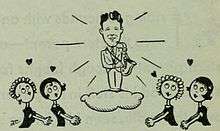
The first known person to have been treated as a teen idol was Franz Liszt, the Hungarian pianist who, in the 1840s, drew such a following among young women that the term "Lisztomania" soon came to describe the phenomenon. The kind of idolizing following Liszt drew in Europe would not be followed for several decades. Geraldine Farrar, American opera singer, had a large following of young women nicknamed "Gerry-flappers" in the early 20th century.[7][8] Rudy Vallée, who became a major success in 1929 with hits like "Honey" and "Deep Night", may have been the first American popular singer to have been idolised by hundreds of teen-aged girls at sold-out concerts. He was also possibly the first popular singer to have a star vehicle created for him: The Vagabond Lover. Frank Sinatra, whose early career is often linked to his appeal to bobby soxers,[3] is also regarded as having been amongst the first teen idols.
1950s–1960s
The great success of young rock stars like Elvis Presley and Pat Boone, film stars like Marlon Brando, Paul Newman, James Dean, Tab Hunter, and Sal Mineo in the 1950s, as well as the wider emergence of youth subcultures, led promoters to the deliberate creation of teen idols such as singers Frankie Avalon, Fabian Forte, Frankie Lymon, and Connie Stevens. Even crooners like Dean Martin and Frank Sinatra were still considered idols and rather handsome. Actors Edd Byrnes and Troy Donahue and other artists deliberately cultivated a (safer) idol image, like Paul Anka.
Anka initially modelled himself on a particular generic type, the teen idol [who] carried on the process ... of changing the image of male youth ... from wild to mild, by providing a cleaner, more wholesome image of masculinity than that of the previous era's rebellious rockabilly heroes [and (working-class) so-called juvenile delinquents, like those in West Side Story]....— [9]
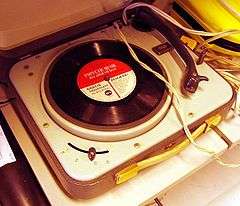
Post-war teens were able to buy relatively inexpensive phonographs — including portable models that could be carried to friends' houses — and the new 45-rpm singles. Rock music played on 45s became the soundtrack to the 1960s as people bought what they heard on the radio. The great majority of the music being marketed to 1950s teens was being written by adults, but 1960s teens were increasingly appreciating and emulating artists closer to their own age, to teen fashion, and to lyrics which addressed their own concerns. Their parents worried about their attraction to artists (and DJs) who were edgy and rebellious. Faces on magazines fed fans; fans buy records, see films, watch TV and buy fashions.
Marketing of the teen idol generally focuses on the image.... The teen idol is structured to appeal to the pre-teen and young teen female pop audience member and children in general.... [They] are commodified in forms and images that are relatively non-threatening to this young audience and to the ancillary market of parents... The teen idol never appears to be autonomous and therefore never appears to be threatening as an adult; he remains, as long as he is popular, perpetually childlike and dependent.— [10]
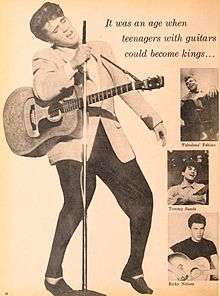
Some marketers turned to film and TV for fresh, attractive, 'safe' faces. Tommy Sands's debut in a television film about the phenomenon, The Idol, made a teen idol out of Sands himself. Ricky Nelson, a performer of rockabilly music, also became a teen idol through his parents' television series, The Adventures of Ozzie and Harriet.[11] Some young TV stars were being hustled into studios to make recordings; for example, ex-Mousketeer Annette Funicello became one of the first big female idols as well as the Lennon Sisters whom had cut out dolls and were always on the covers of the gossip magazines; another, Johnny Crawford of The Rifleman, had five Top-40 hits.[3] In 1963, Luke Halpin made a big splash as a teen idol in the television program Flipper. After Bye Bye Birdie was released in 1963, Bobby Rydell became an instant teen idol.
In the 1960s as situation comedies and dramas on television using child actors became more popular, actors Paul Petersen, Patty Petersen, and Shelley Fabares from The Donna Reed Show, Dwayne Hickman from The Many Loves of Dobie Gillis, Sally Field of Gidget, Jon Provost of Lassie, Jay North from Dennis the Menace, Billy Mumy of Lost in Space (and later of novelty group Barnes and Barnes), Sajid Khan of Maya, and Keith and Kevin Schultz known as the "Schultz Twins" on The Monroes all became younger preteen idols and grew into being teen idols.
Likewise, Tommy Steele, the Beatles with Beatlemania, the Rolling Stones, and the Beach Boys were teen idols, especially during the earlier part of their careers, although they quickly grew out of that status. The Rolling Stones did it through a more rebellious image, the Beatles did it through their more developed (or "grown up") music. Similarly, Neil Sedaka had two distinct eras of his career, with about a decade in between: one as a teen idol in the 1960s, and a later career in adult contemporary music. From the family band the Cowsills, Susan Cowsill, John Cowsill and Barry Cowsill became teen idols and were on teen magazine covers for many years. Many of the teen idols of the era were the sons of older, established stars; Dino, Desi & Billy were active as teen idols during the mid-sixties. The group included Desi Arnaz Jr (son of bandleader Desi Arnaz), Dean Paul Martin (son of singer Dean Martin), and Billy Hinsche (a mutual friend whose parents were not famous). Gary Lewis, son of comedian Jerry Lewis, fronted the Playboys during this era.
All of the Monkees became instant teen idols in the late 1960s after their TV show became an overnight success, especially for Micky Dolenz and Davy Jones. The British born member of the Monkees Davy Jones was regularly featured in all time teen idol lists. In 2008, Yahoo Music named Jones the number one teen idol of all time,[12] and in 2009 he was ranked second in a list compiled by Fox News.[13] Davy Jones still to this day tends to win many number one's and the top of the list in best teen idol contests.
Tiger Beat magazine, an influential teen music magazine, began publishing in 1965.
1970s
After Davy Jones came Bobby Sherman and David Cassidy, who held the title of Teen Idols from the late 1960s until the mid-1970s. Both Sherman and Cassidy were actors on television and chart topping musicians in the pop-rock category at the time; with David Cassidy in particular enjoying immense international fame and success. Sherman was on hit TV shows Shindig! and Here Come the Brides among many others. Musical series such as Cassidy's The Partridge Family, the animated series The Archie Show, and (to a lesser extent) The Brady Bunch integrated television and teen-pop music to significant success during this time frame. The Brady Bunch's Barry Williams and Christopher Knight, as was tennis pro/actor Vincent Van Patten all were constantly in the fan magazines at the time. Actors Richard Thomas, Robby Benson, Peter Barton, Leif Garrett, Mark Lester, Jan-Michael Vincent, William Katt, and Jack Wild were the talk of the teenagers in the 1970s as well. Musicians the Hudson Brothers were on many teen magazine covers for a number of years as teen idols. They had two shows on TV during the 1970s and recorded many albums.
One of the features of many teen idols is that their fans (and, in some cases, the musicians themselves) tend to develop a distaste for the music once they became adults, and it is not much listened to by adults, except for nostalgia: the legacy of bubblegum pop. Teen idol performers in this category would include Shaun Cassidy, Leif Garrett, the Osmond Brothers (particularly Donny Osmond and their teen idol sister Marie Osmond), Andy Gibb, Tony DeFranco of the DeFranco Family, and the Bay City Rollers. Even modern classic hits and oldies outlets, which cover this time period, rarely play cuts from the teen idols of the era. A notable exception is Michael Jackson of the Jackson Five, who began his career as a teen idol along with his brothers, but whose individual career eventually evolved far beyond the limitations of that description and into superstardom.
The Jackson Five were the first African-American music group to become national teen idols,[14] appearing alongside white idols in magazines such as 16 and Tiger Beat.[15]
1980s
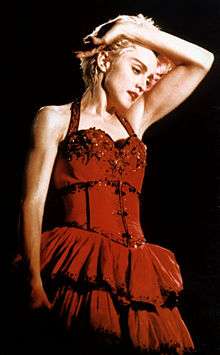
In 1985 actress Alyssa Milano from Who's The Boss became a major teen idol and was dubbed "The Teen Queen of the 1980s. In the mid-1980s there was a group of young actors called the Brat Pack; the whole group collectively and separately became teen idols. They were Emilio Estevez, Anthony Michael Hall, Rob Lowe, Andrew McCarthy, Demi Moore, Judd Nelson, Molly Ringwald, and Ally Sheedy. They starred in many coming-of-age films.
Actors Corey Feldman and Corey Haim also became teen idols during the later part of the 1980s with films The Goonies and together The Lost Boys, Dream a Little Dream and License to Drive among other films. They were dubbed "the two Coreys". Before Corey Haim's death in 2010, they did a reality TV show for two seasons (2007–08) on A&E named The Two Coreys after their 1980s moniker.
Actor River Phoenix during his teen years became a teen idol during the later part of the 1980s.Phoenix's work encompassed 24 films and television appearances, and his rise to fame led to his status as a "teen idol".On October 31, 1993, Phoenix collapsed and died of drug-induced cardiac arrest on the sidewalk outside the West Hollywood nightclub The Viper Room at the age of 23.
Australian-American singer Rick Springfield was regarded as teen idol from 1971, after releasing his solo début single "Speak to the Sky". His career matured over the next two decades with more hit songs. He gained further fame as a television series actor.[17]
In the 1980s, Puerto Rican boy band Menudo, caused a sensation in Latin America, nicknamed Menudomania that became compared to the Beatles' Beatlemania.
Also painted with the Beatlemania brush was British pop group Duran Duran. Dubbed "the Fab Five", this group is recognized as pioneers in the then relatively new area of music video, that started with the Monkees in the 1960s. Their exotic videos, such as Hungry Like the Wolf, being fixtures on cable channel MTV coupled with their exposure in teen magazines instilled them as teen idols in America and around the world though the majority of the 80s. Another British pop band Culture Club were dubbed teen idols, with Boy George's androgynous outfits that were copied by his teen fans and young adults alike.
At the end of the 1980s, actor Kirk Cameron became a major teen idol teenage heartthrob. Cameron was best known for his role as Mike Seaver on the television situation comedy Growing Pains from 1985 to 1992. Also Scott Baio and Willie Aames of Charles in Charge fame found themselves regulars in teen magazines.
In popular music, the late 1980s was the boom of teenagers dominating the music charts. Debbie Gibson became the youngest person to write, perform and produce a number-one single, "Foolish Beat", and also had many hits from her first two albums. Tiffany, another teen icon, became a pop sensation at 15 years old thanks to an aggressive marketing strategy. She promoted her debut album in shopping malls of the US. She is also the youngest person to have a debut album hit number one and have multiple number one singles from that album ("I Think We're Alone Now" and "Could've Been"). Having become a household name, she had then-unknown band New Kids on the Block as an opening act for her shows. However, the sudden popularity of the New Kids caused their roles to be reversed. Gibson and Tiffany's careers had stalled by the early 1990s; so had NKOTB by the mid-nineties. The other boy band from Boston, New Edition was very popular with the teen set by the end of the 1980s as well.
Madonna, was another example of teen idol and became a fashion icon between teenagers. Even, professor Joseph Straubhaar in the book Communications Media in the Information Society (1997) called a teen idol by 1992 year.[18]
1990s
The manufacturing of teen idols has been marketed more aggressively and with greater sophistication since the 1980s.[19] The rise of MTV in the 1980s and the success of the boy bands of the 1990s and 2000s has continued to fuel the phenomenon.[10][20] Besides a combination of good, clean-cut looks and a ubiquitous marketing campaign, such bands typically include a variety of personality types (e.g. "the shy one", "the smart one", etc.) Classic examples of "boy bands" include Menudo, New Kids on the Block, Take That, Backstreet Boys, and 'NSYNC, all becoming the best selling pop groups of the decade. Hanson was initially marketed as such a band, but eventually outgrew this label to become a successful indie band. Female pop super star Mariah Carey, was very popular with teens in the 90s decade. Christina Aguilera, Jennifer Lopez, Mandy Moore, Jessica Simpson, and Britney Spears, along with mega girl groups the Spice Girls and Destiny's Child, also became very popular at the end of the decade. Other notable examples from the 1990s are female R&B singers Mýa, Aaliyah, Monica, and Brandy. After Brandy's television show Moesha went on the air, it brought her many teen fans and she was always on the cover or in the teen magazines for many years. Brothers Nick Carter from Backstreet Boys and pop star Aaron Carter were both teen idols in their heyday, as was, to a much lesser extent, sister Leslie. Robbie Williams of boy band Take That had teen idol status as did Ricky Martin during the Latin music explosion of the late 1990s.
Many of the major teen idols in the 1990s were from boy bands and musical acts. One major exception was the situation comedy Home Improvement 's Jonathan Taylor Thomas, who appeared from 1991 to 1998, but never embraced his stardom. Another major teen idol was Freddie Prinze, Jr. who skyrocketed to teen heartthrob status after starring in successful teen horror films.
The 1997 film Titanic made Leonardo DiCaprio a teen idol; during "Leo-Mania" his face appeared on many teen magazines.[21] Other teen idols from TV were most of the cast of Saved by the Bell, Joshua Jackson and James Van Der Beek of Dawson's Creek, Ben Savage and Rider Strong of Boy Meets World, Joseph Gordon-Levitt of 3rd Rock From the Sun, Jonathan Brandis of seaQuest DSV, Jared Leto of My So-Called Life, Joey Lawrence of Blossom (and to a lesser extent, Joey's brothers, Matthew and Andrew), Jason Priestley and Luke Perry of Beverly Hills, 90210 fame, and Erik Von Detten of various TGIF shows. These actors were often found on the covers and pages of teen magazines during the 1990s as teen idols as well. Sarah Michelle Gellar was a major teen idol in the late 90s, as a result of her lead role in the popular television series Buffy the Vampire Slayer. Fraternal twin sisters and TV actresses Ashley Olsen and Mary-Kate Olsen were major tween idols, and as they grew up they later became teen idols during the 1990s. After the movie Clueless, Alicia Silverstone found herself a teen idol. The comedy duo of Kenan Thompson and Kel Mitchell are also teen idols, in which they star in the Nickelodeon sketch comedy All That, their own sitcom Kenan & Kel, and the 1997 film Good Burger. Nickelodeon also produced The Amanda Show which featured Amanda Bynes as well.
2000s
.jpg)
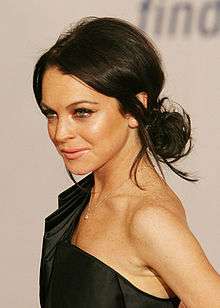

The Walt Disney Company and its numerous outlets (e.g. Disney Channel, Radio Disney and Walt Disney Pictures) have successfully developed a new generation of teen idols. In the early 2000s, the company developed the careers of actresses and singers Hilary Duff and Lindsay Lohan, initially targeting youth and female teen audiences. While still teenagers, Duff became famous for her starring titular character in the Disney Channel teen sitcom Lizzie McGuire, and Lohan became famous for her starring roles in many successful teen movies, including Freaky Friday, Confessions of a Teenage Drama Queen, Herbie: Fully Loaded, and Mean Girls. Other Nickelodeon and Disney Channel stars are also teen idols, including Jesse McCartney, Raven-Symone, Kyla Pratt, Ashley Tisdale, Vanessa Hudgens, Drake Bell, Josh Peck, Emma Roberts, Miranda Cosgrove, Miley Cyrus, Victoria Justice, Jennette McCurdy, Elizabeth Gillies and the Jonas Brothers.
In 2002, Canadian singer Avril Lavigne dominated the music scene and eventually became a worldwide teen idol. Listed at number 4 on Yahoo!'s Top 25 Teen Idols of all-time.[22] Other teen idols are in the R&B and hip-hop realm, including JoJo, Ciara, Keke Palmer and Chris Brown.
2010s
Disney Channel stars Selena Gomez and Demi Lovato, YouTube star Becky G, and The X Factor alumni Little Mix have come to be teen idols. Ariana Grande was a popular teen actress before gaining mainstream popularity as a singer and teen idol.
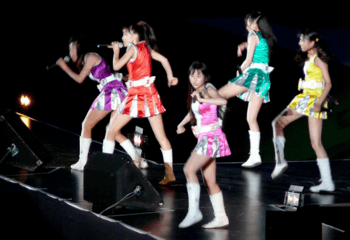
In Japan, more and more "idol groups" have appeared. In Japanese culture, persons called "idols" are media personalities in their teens and early twenties who are considered particularly attractive or cute and who will, for a period ranging from several months to a few years, regularly appear in the mass media, e.g. as singers for pop groups, bit-part actors, TV personalities, models in photo spreads published in magazines, advertisements, etc. One of the most successful groups is Momoiro Clover Z. Their performances incorporate elements of ballet, gymnastics, and action movies.[23] During 2014, about 486,000 people attended their live concerts, which was the highest record of all female musicians in Japan.[24] Momoiro Clover Z has been ranked as the most popular female idol group from 2013 to 2015.[25][26][27][28]
Since their rise to fame in recent years, pop singer and YouTube sensation Justin Bieber, country-pop musician Taylor Swift, boy band One Direction, pop rock band 5 Seconds of Summer, and girl group Fifth Harmony have become examples of modern-day mega teen idols who have achieved international success, known for their devoted teen female fans, as well as an adult fan base making them all international superstars as well as teen idols.
See also
Notes
- ↑ Jenner changed her name due to gender transition in 2015.[6]
References
- ↑ "Teen Idol". All Music Guide. Retrieved 2009-10-13.
- ↑ Unterberger, Richie. "Essay: Teen Idol". All Music Guide. Retrieved 2009-10-13.
- 1 2 3 Bogdanov, Vladimir; Chris Woodstra; Stephen Thomas Erlewine (2002). AllMusic guide to rock: the definitive guide to rock, pop, and soul. Hal Leonard Corporation. pp. 1309–10. ISBN 0-87930-653-X.
- ↑ "TIME Asia: The Empress of Pop". Benny Labamba. 2002-03-25. Retrieved 2014-03-06.
- ↑ "Pictures of Menudo in General Pictures, Page 1". Teen Idols 4 You. Retrieved 2014-06-04.
- ↑ Buzz Bissinger (June 1, 2015). "Introducing Caitlyn Jenner". Vanity Fair. Retrieved June 1, 2015.
- ↑ New York Times (April 23, 1922) p. 20
- ↑ Rosenthal and Warrack (1979), p. 161
- ↑ Jim Leach, Jeannette Sloniowski, Candid eyes: essays on Canadian documentaries. University of Toronto Press, 2003, pp.50–60. [Emphasis mine]
- 1 2 P. David Marshall, Celebrity and power: fame in contemporary culture. U of Minnesota Press, 1997 p.168ff. ISBN 0-8166-2725-8
- ↑ Ricky Nelson interviewed on the Pop Chronicles (1969)
- ↑ O'Connor, Rob (2008-12-01). "The Top 25 Teen Idols Of All-Time | List of the Day – Archives – Yahoo Music". New.music.yahoo.com. Retrieved 2014-06-04.
- ↑ "Then & Now: 10 Best Teen Idols of All Time". Fox News. 2009-01-01. Retrieved 2014-06-04.
- ↑ Mansour, David (2011). From Abba to Zoom: A Pop Culture Encyclopedia of the Late 20th Century. p. 241. ISBN 9780740793073.
- ↑ "Teen Magazines, 1973". Stuck in the 70s. Retrieved 29 December 2014.
- ↑ Heller 1998, pp. 130
- ↑ "Rick Springfield on Journey From Teen Heartthrob to 'True Detective'". Rolling Stone.
- ↑ Straubhaar 1997, pp. 188
- ↑ "Teen Pop". All Music Guide. Retrieved 2009-10-13.
- ↑ "MTV Teen Idol". Iomusic News. Archived from the original on January 16, 2008. Retrieved 2008-01-25.
- ↑ Winston, Sherri (1998-05-05). "Leomania / Like Sinatra, Elvis And The Beatles Before Him, The Young Star Of Titanic Is Turning The World Of Teen-age Girls Upside Down.". Sun-Sentinel. Retrieved 23 October 2015.
- ↑ "The Top 25 Teen Idols of All Time".
- ↑ "Momoiro Clover Z dazzles audiences with shiny messages of hope". The Asahi Shimbun. 2012-08-29.
- ↑ "AKB48よりももクロが上 コンサート動員力2014". Nihon Keizai Shimbun (in Japanese). 4 December 2014. Retrieved 16 September 2015.
- ↑ "ももクロ、初のAKB超え タレントパワーランキング". Nihon Keizai Shimbun (in Japanese). 24 June 2013. Retrieved 26 July 2013.
- ↑ タレントパワーランキング トップ100. Nikkei Entertainment (in Japanese). Nikkei BP (June, 2013): 48–49. 2013-05-04. - the largest public opinion survey in Japan (see ja:タレントパワーランキング)
- ↑ タレントパワーランキング トップ100. Nikkei Entertainment (in Japanese). Nikkei BP (June, 2014). 2014-05-02.
- ↑ タレントパワーランキング トップ100. Nikkei Entertainment (in Japanese). Nikkei BP (June, 2015). 2015-05-02.
Bibliography
- Heller, Steven (1998), Teenage Confidential: An Illustrated History of the American Teen, Chronicle Books, ISBN 9780811815840
- Straubhaar, Joseph (1997), Communications Media in the Information Society, Wadsworth Publishing Company, ISBN 9780534521288
External links
- The Top 25 Teen Idols of All-Time at Yahoo.com